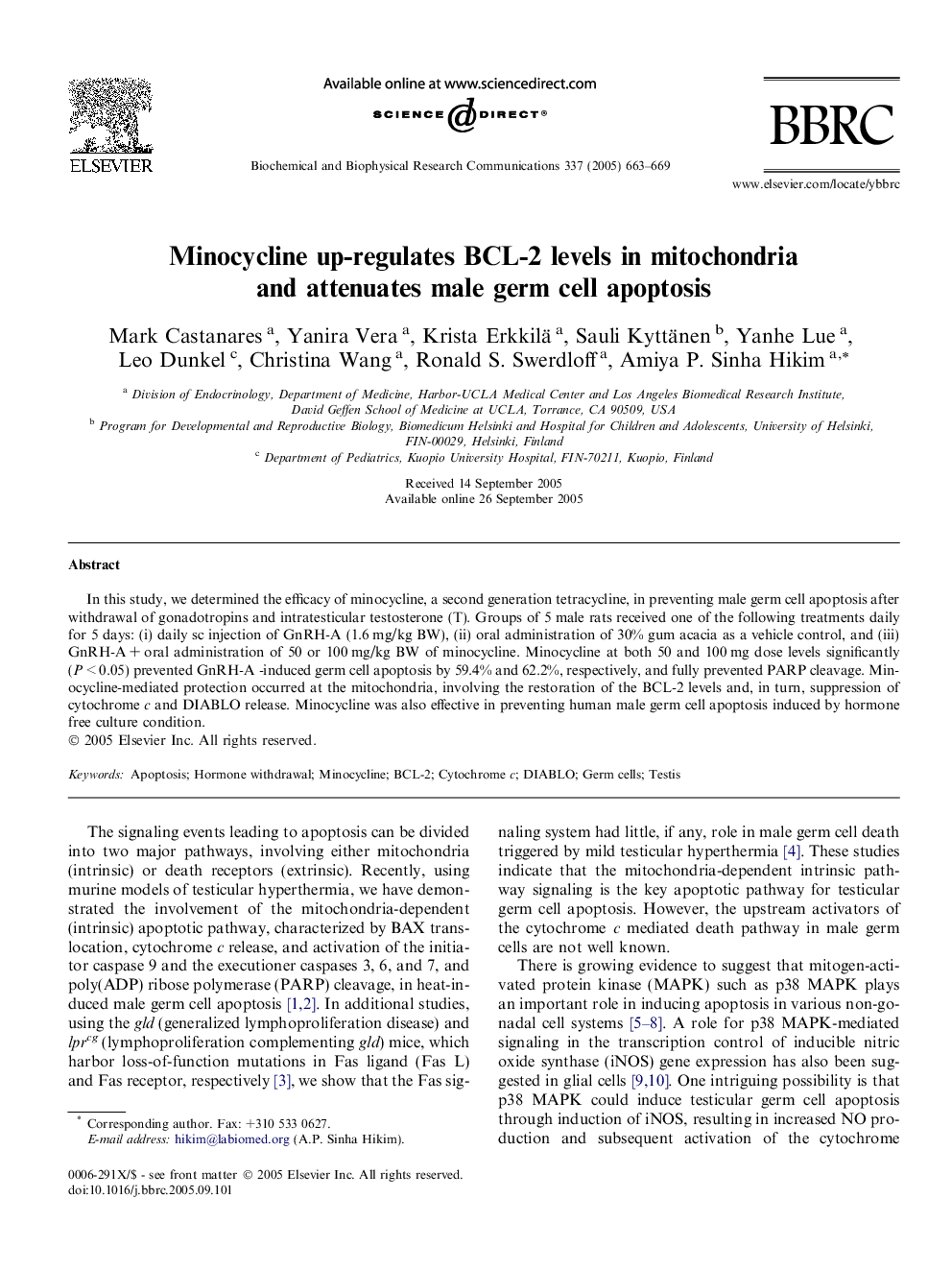| Article ID | Journal | Published Year | Pages | File Type |
|---|---|---|---|---|
| 10767837 | Biochemical and Biophysical Research Communications | 2005 | 7 Pages |
Abstract
In this study, we determined the efficacy of minocycline, a second generation tetracycline, in preventing male germ cell apoptosis after withdrawal of gonadotropins and intratesticular testosterone (T). Groups of 5 male rats received one of the following treatments daily for 5 days: (i) daily sc injection of GnRH-A (1.6Â mg/kg BW), (ii) oral administration of 30% gum acacia as a vehicle control, and (iii) GnRH-AÂ +Â oral administration of 50 or 100Â mg/kg BW of minocycline. Minocycline at both 50 and 100Â mg dose levels significantly (PÂ <Â 0.05) prevented GnRH-A -induced germ cell apoptosis by 59.4% and 62.2%, respectively, and fully prevented PARP cleavage. Minocycline-mediated protection occurred at the mitochondria, involving the restoration of the BCL-2 levels and, in turn, suppression of cytochrome c and DIABLO release. Minocycline was also effective in preventing human male germ cell apoptosis induced by hormone free culture condition.
Related Topics
Life Sciences
Biochemistry, Genetics and Molecular Biology
Biochemistry
Authors
Mark Castanares, Yanira Vera, Krista Erkkilä, Sauli Kyttänen, Yanhe Lue, Leo Dunkel, Christina Wang, Ronald S. Swerdloff, Amiya P. Sinha Hikim,
